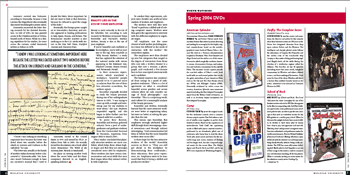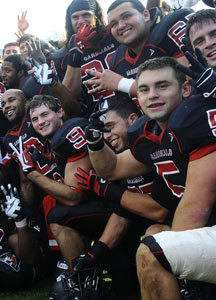Premium in Workplace
 Beauty Lies in the Eye of Your Employer
Beauty Lies in the Eye of Your Employer
Beauty is most certainly in the eye of the beholder, but according to new research by Wesleyan economist Tanya Rosenblat and Harvard’s Markus Mobius, beauty is also in the eye of your employer.
If you’re beautiful and confident in the workplace, you’re well on your way to the top, they conclude in “Why Beauty Matters,” a study that has captured the attention of the national media with stories appearing in the Baltimore Sun, Hartford Courant, Boston Herald, and Portsmouth Herald.
In their economic experiments, which simulated a workplace, beautiful people earned 10 to 15 percent more in salaries than the rest of their less attractive co-workers, the authors report.
Rosenblat originally decided to study the beauty premium during one of her undergraduate classes in 2001. “I was trying to come up with a simple and interesting case for my students to write about,” she says. Students responded eagerly, and she began to delve further into her research with her co-author.
To prove their theories, Rosenblat and Mobius gathered subjects from a pool of undergraduates and graduate students from the Universidad Nacional de Tucuman, Argentina, from August 2002 to March 2003.
Their studies concluded that physically attractive workers are more confident, which helps them obtain higher wages and that they are (wrongly) considered more able by employers. These workers also have certain communication and social skills that raise their wages when they interact verbally with employers.
To conduct their experiments, subjects were divided into artificial labor markets of workers and employers.
The workers were told they were “hired” to perform a skilled task of solving computer mazes. Workers were then given the opportunity to interview with five different employers to negotiate wages.
“All employers saw the same resume of each worker (including practice time) but differed in the mode of interaction with the worker,” the researchers explain.
The employers were then divided up into five categories that ranged in the degree of interaction from those who saw only a written resume to a group that saw a resume, a photograph, and conducted a five-minute face-to-face unscripted interview with each candidate.
The beauty measure was constructed from ratings by a panel of independent evaluators. “There is a lot of agreement on what is considered beautiful across genders and across cultures when we only consider ratings of facial photographs,” says Rosenblat. “This is a surprising result, and it allows for a meaningful analysis of the beauty premium.”
Rosenblat and Mobius eventually learned that the more attractive workers were better at negotiating salary, but were no better at solving the puzzles than the rest.
This means, says Rosenblat, that employers wrongly attributed higher skill through direct stereotyping?visual interaction?and through indirect stereotyping. “Oral communication led them to believe that the more beautiful workers were more able.”
Is there hope for the less attractive workers of the world? Rosenblat assures us there is. “They can still get ahead in the workplace by demonstrating their credentials? their education, their prior experience, etc. Employers want to be reassured that they’re hiring a skilled and productive worker.”

